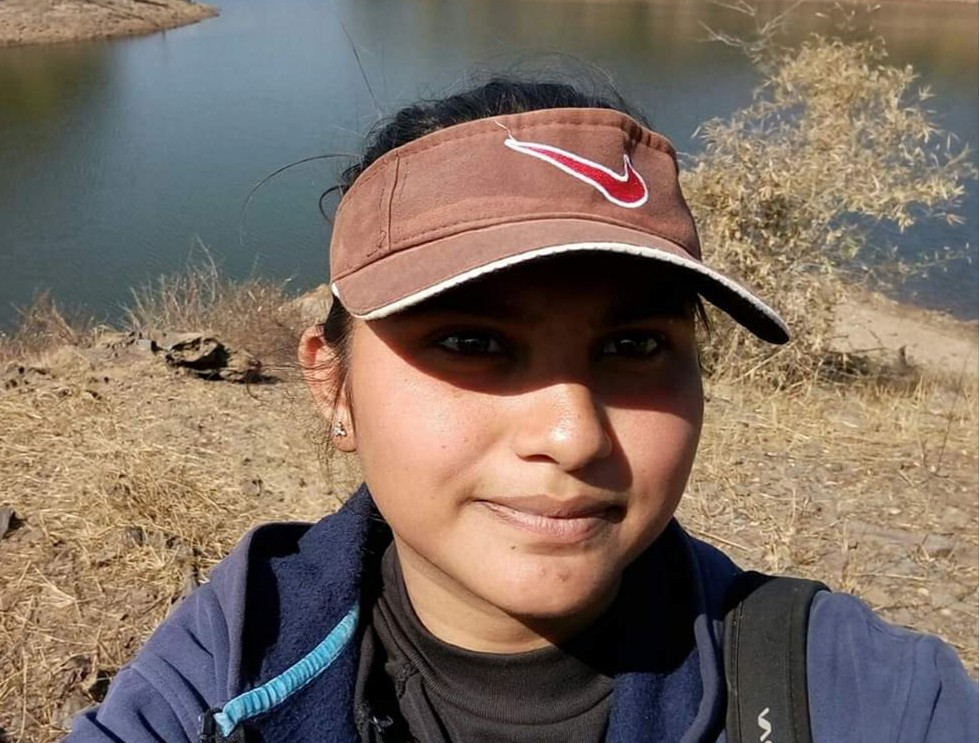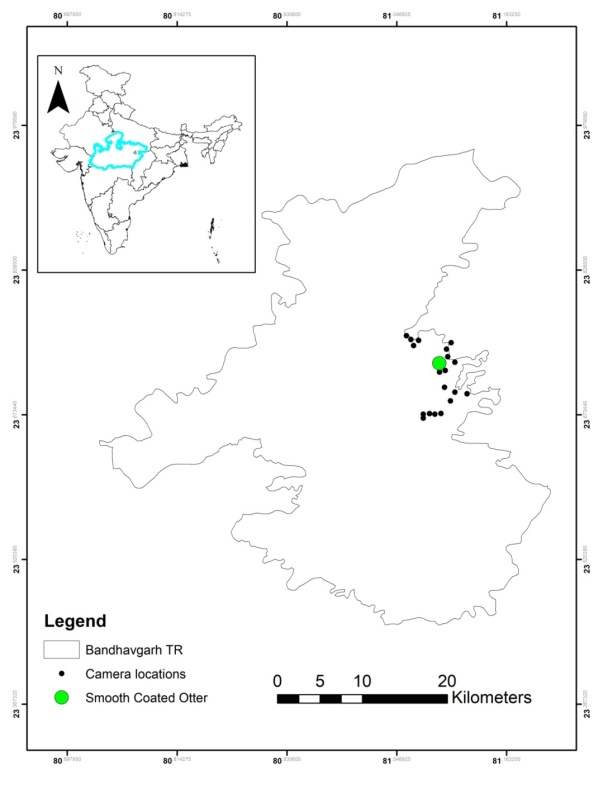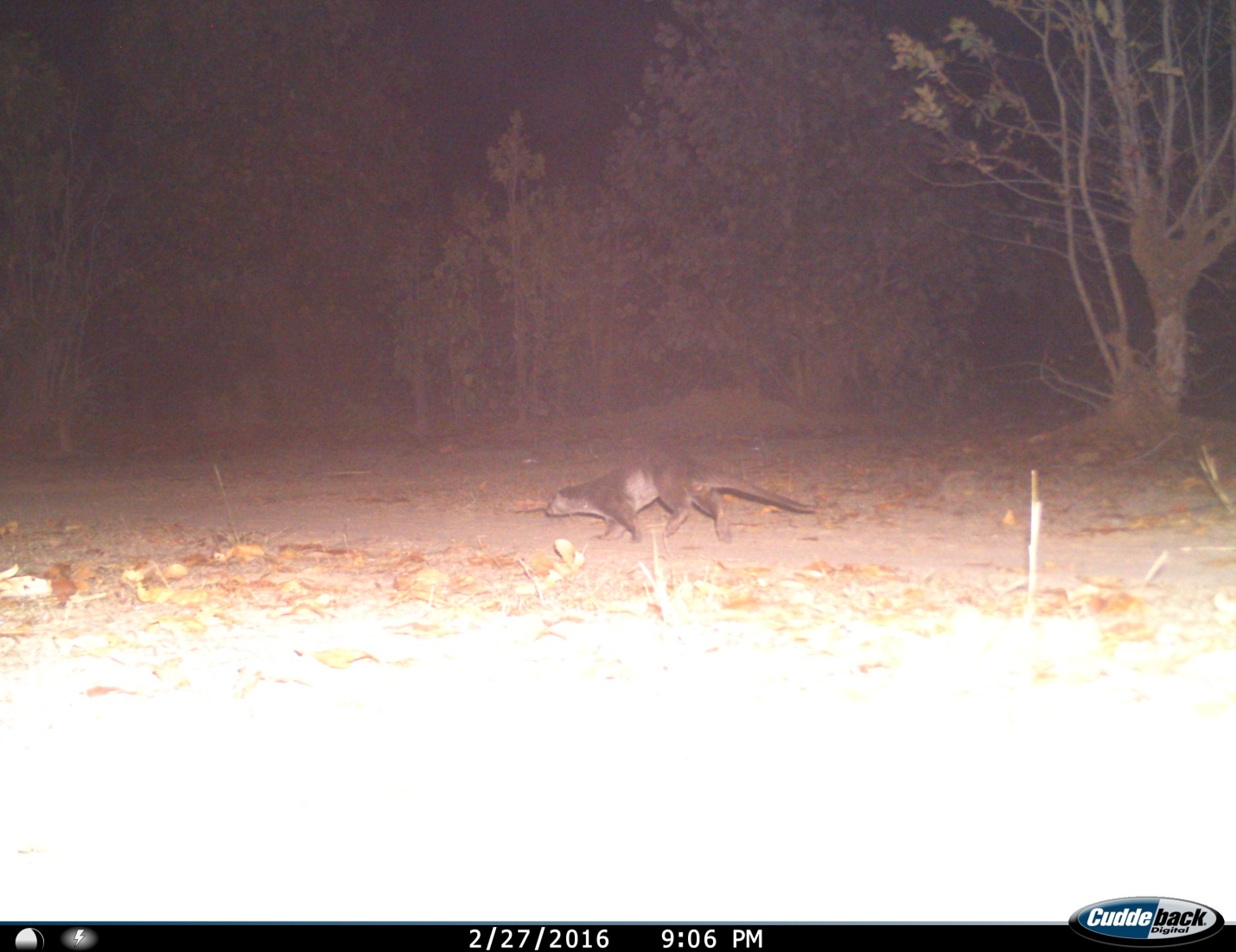IUCN/SSC Otter Specialist Group Bulletin

©IUCN/SCC Otter Specialist Group
Volume 36 Issue 2 (April 2019)
Citation: Rather, T.A., Tajdar, S., Kumar, S. and Khan, J.A. (2019). First Photographic Record of Smooth Coated Otter (Lutrogale perspicillata) in Bandhavgarh Tiger Reserve, Madhya Pradesh, India. IUCN Otter Spec. Group Bull. 36 (2): 93 - 97
First Photographic Record of Smooth Coated Otter (Lutrogale perspicillata) in Bandhavgarh Tiger Reserve, Madhya Pradesh, India
Tahir Ali Rather1, 2, Shaizah Tajdar1, Sharad Kumar2 And Jamal A.Khan1
1Department of Wildlife Sciences, Aligarh Muslim University, Aligarh, Uttar Pradesh, India, 202002 E-mail: murtuzatahiri@gmail.com
2 The Corbett Foundation.
Received 15th November 2018, accepted 3rd June 2019
Abstract: The smooth-coated otter (Lutrogale perspicillata) is one of the three species of otters found in India. It occurs throughout the country from the Himalayas downward to the south. Smooth-coated otter is listed as Vulnerable in the IUCN Red List of threatened species and is legally protected in India under schedule II of the Indian Wildlife (Protection) Act, 1972. Being previously unreported in Bandhavgarh Tiger Reserve, we present the first record of smooth-coated otter in Bandhavgarh Tiger Reserve. The species was recorded in camera trap survey aimed to monitor large carnivores in the buffer zone of the reserve. No further record of the species was found during the subsequent camera trap survey, suggesting the very scanty distribution of the species in the area.
Keywords: Lutrogale perspicillata, Smooth-coated otter, Camera trapping, Central India, Bandhavgarh
INTRODUCTION
The smooth coated otter is semi-aquatic and essentially an otter of plains, well adapted to live in semi-arid regions of the northwestern and Deccan plateau of India (Prater 1971). Smooth-coated otter generally occurs in large rivers, lakes, mangroves and swamp forests. In Southeast Asia, the smooth-coated otter is known to use rice fields for foraging activities (Melisch & Foster-Turly, 1996). It is distributed throughout South and Southeast Asia, including South China, India, and Pakistan, with small isolated sub-population occurring in Iraq (Pocock 1949; Mason and Macdonald 1986; Hussain 1993). Habitat loss due to the construction of dams, reclamation of wetlands for agricultural and habitation purposes, poaching and water contamination with pesticides are some of the major threats to the smooth-coated otter throughout its range (Hussain et al. 2008). Information regarding population estimates is lacking; however,a decreasing population trend by a factor of 30% over the past 30 years has been suggested (Nawab and Hussain 2012).
MATERIALS AND METHODS
The study was carried in Bandhavgarh Tiger Reserve which lies between latitude 23° 27' 00'' to 23° 59' 50" North and longitude 80° 47' 75" to 81° 15' 45" East (Fig. 1), having an area of 1536.93 km2. The reserve is characterized by well-defined winter (November-February), summer (March- June) and monsoon-post monsoon (July- October). The average rainfall is 1,173 mm, most of which occurs during the monsoon. The vegetation of the reserve comprises of moist peninsular low-level Sal (Shorea robusta) forest, northern dry mixed deciduous forest, dry deciduous scrub, dry grassland and West Gangetic moist mixed deciduous forest (Champion and Seth, 1968).
The species was detected in camera trap surveying. We used extensive camera trapping for one year in the study area. The camera traps were installed along the roads, trails and around water bodies. Each camera trap station consisted of two camera units mounted on tree trunks on either side of road or trails. Cameras remained active only during the night. We used 35 pairs of Cuddeback© camera traps. The main purpose of the camera trapping was to monitor the tigers and other co-predators in the buffer zone of Bandhavgarh Tiger Reserve and thus the study was designed accordingly.
RESULTS
The smooth coated otter was first recorded in a camera trap on February 27, 2016 (Figure 2). The camera traps were installed along the roads and trails. The species was captured in one of the camera traps (Figure 1) set along the road. The trap location exists near a perennial stream that originates from the Bandhavgarh Fort, locally known as Charan Ganga. The stream flows through the forested area and finally makes its way into the villages. The locals use the stream for irrigation, fishing and washing purposes. Jamun (Syzygium cumini) and sal (Shorea robusta) are the dominant vegetation forms along the stream and provide suitable habitat for other large carnivores during summers.
DISCUSSION
Smooth-coated otters are known to live in groups with seasonal variations in group size (Hussain 2009). To our surprise, only A single individual was captured during the one-year camera trap survey. Camera trapping was carried in an area of 680 km2 encompassing all major habitat types including riverine patches and areas adjacent to the streams. Two major River systems, Son and Juhila run through the reserve. Son River flows in the eastern part of the reserve and Juhila flows along the southern border of the reserve. Camera traps were installed in adjacent areas to these rivers but no further captures of the smooth-coated otter were recorded.
The distribution of smooth-coated otter in Bandhavgarh seems very scanty. No further camera trap captures or indirect signs were recorded. A comprehensive study in and around Bandhavgarh Tiger Reserve is required to understand the distribution patterns of the smooth-coated otter.
Acknowledgements: We are thankful to The Corbett Foundation for funding this study. We wish our thanks to the Madhya Pradesh, Forest Department for permitting us to carry this study in Bandhavgarh Tiger Reserve. We wish to thank Shri Mirdul Kumar Pathak, Field Director, BTR for his support during the study.
REFERENCES
Champion, H.G., Seth, S.K. (1968). The Revised Survey of the Forest Types of India, Manager of Publications, New Delhi
Hussain, S.A. (2009). Group size, group structure and breeding in smooth-coated otter Lutra perspicillata Geoffroy (Carnivora, Mustelidae) in National Chambal Sanctuary, India. Mammalia, 60: 289-298.
Hussain, S. A. (1993). Aspects of the ecology of smooth-coated Indian otter Lutra perspicillata in National Chambal Sanctuary. PhD thesis, Aligarh Muslim University, Aligarh
Hussain, S.A., de Silva P.K., Mostafa FM. (2008). Lutrogale perspicillata. In: 2008 IUCN Red List of Threatened Species.
http://www.iucnredlist.org/apps/redlist/details/12427/0
Mason, C.F., Macdonald S.M. (1986). Otters, ecology and conservation. Cambridge University Press, Cambridge, London, pp. 236.
Melisch, R., Foster-Turly, P. (1996). First record of hybridisation in otters (Lutrinae: Mammalia), between smooth-coated otter, Lutrogale perspicillata (Geoffroy, 1826) and Asian small-clawed otter, Aonyx cinerea (Illiger, 1815). Zool. Gart. 66: 284– 288
Nawab, A., Hussain, S. A. (2012). Factors affecting the occurrence of smooth‐coated otter in aquatic systems of the Upper Gangetic Plains, India. Aquatic Conserv: Mar. Freshw. Ecosyst., 22: 616-625. doi: 10.1002/aqc.2253
Pocock, R.I. (1949). The fauna of British India, including Ceylon and Burma. Volume 2, Mammals. Taylor and Francis, London 2: 265-317.
Prater, S. H. (1971). The book of Indian animals. Eleventh impression. Bombay Natural History Society. Calcutta: Oxford University Press.
Résumé : Premier Enregistrement Photographique de Loutre à Pelage Lisse (Lutrogale perspicillata) dans la Réserve de Bandhavgarh Tiger, Madhya Pradesh, en Inde
La loutre à pelage lisse (Lutrogale perspicillata) est l’une des trois espèces de loutres présente en Inde. On la trouve dans tout le pays, de l’Himalaya jusque dans le sud de l’Inde. La loutre à pelage lisse est classée comme vulnérable dans la liste rouge des espèces menacées de l’UICN. Elle est légalement protégée en Inde en vertu de l’annexe II de la loi de 1972 sur la protection de la vie sauvage en Inde. Alors qu’elle n’a jamais été observée au préalable dans la réserve de Bandhavgarh Tiger, nous présentons la première observation de loutre à pelage lisse dans cette réserve. L’espèce a été prise par un piège-photo destiné à surveiller les grands carnivores dans la zone tampon de la réserve. Aucun autre enregistrement de l’espèce n’a été réalisé lors de relevés ultérieurs à l’aide de pièges photo, ce qui suggère la très faible densité de l’espèce dans la région.
Revenez au dessus
Resumen: Primer Registro Fotográfico de Nutria Lisa (Lutrogale perspicillata) en la Reserva de Tigrres Bandhavgarh, Madhya Pradesh, India
La nutria lisa (Lutrogale perspicillata) es una de las tres especies de nutria que se encuentran en India. Se distribuye por todo el país, desde los Himalayas hasta el sur. La nutria lisa está listada como Vulnerable en la Lista Roja de especies amenazadas de UICN, y está legalmente protegida en la India bajo el esquema II de la ley de Protección de Fauna en India, 1972. Siendo que no estaba previamente reportada en la Reserva de Tigres Bandhavgarh, presentamos el primer registro de nutria lisa en la misma. La especie fue registrada en un relevamiento con cámaras-trampa dirigido a monitorear grandes carnívoros en la zona buffer de la reserva. En el relevamiento con cámaras-trampa sucesivo, no volvió a aparecer ningún registro de la especie, sugiriendo una distribución muy escasa en el área.
Vuelva a la tapa





